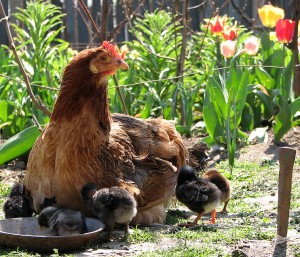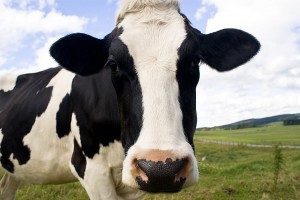Greetings from Land’s End in Nova Scotia !
 I have to write in shorter segments these days as I no longer have internet at home . At the library I am allowed an hour and sometimes two to use a computer. Then I am done until another day. With my poor vision I am a very slow writer!
I have to write in shorter segments these days as I no longer have internet at home . At the library I am allowed an hour and sometimes two to use a computer. Then I am done until another day. With my poor vision I am a very slow writer!
Reflecting on haying this year I dare say it was one of the hardest years we had in the twenty three we have been on this farm. With the changing wind now from the southwest fog moved in mornings. The second part of the field lay drenched in wet fog until late morning or early afternoon. The sun came out and Bill was hard at work spreading the hay out to dry.  Before dampness came in the evening he had to rake the hay in piles again. Still he managed to get the second cut in the barn. Part was damp and had to be removed several times from the barn to the lawn to finish drying.
There was still another cutting to do in the main field and several smaller cuttings in smaller areas that used to be gardens. The first week in June ended without that third section mowed. It rained; was muggy and foggy  the rest of June. By July Bill mowed the remainder of the first field and let it lie. Some where before the end of July with intermittant sun he managed to get it partly dry and made haylage.
Here I have to say I admire Bill’s ingenuity. He is the only person I know who can make haylage without any equipment! He did it totally by hand! Bill had acquired three fish boxes from the fish plant. They are grey hard plastic and about four feet square and four feet tall. The boxes are normally used to hold and transport fish but the government does not allow their reuse. Since they are discarded they were free to us.
Bill lined one box with heavy plastic which was also free from the fish plant. He put the partially dried hay loose in the box after washing them thoroughly. Hay used for haylage needs only to be dried a day or two at most. Then he wrapped the plastic around the hay squeezing out air as he wrapped. I helped hold the plastic as he used duct tape to secure it shut! Thank goodness for duct tape! We use it for many things. It is important to wrap as tightly as humanly possible with out a machine to do it for you. After the plastic was secure he replaced the lid on the box. It will set until later this winter when he feeds  it to the animals. He made haylage last year and the goats and horse loved it.
If done properly the haylage will not mold. The secrect is to squeeze out the air. Those big bales of haylage farmers put up  that look like giant marshmellows are too big for anyone only having a few animals. Haylage has to be used up in a few days of unwrapping or it will spoil. Making it as Bill does our animals can eat it before it spoils. This is important as spoiled haylage can make cows, horses or goats very sick. We only ever bought one large bale not knowing this and almost lost a goat and horse when they got diarreah from moldy haylage.
August the weather remained the same. I never recall seeing such grey, bleak days in the summer all the time I have lived here. Often we have fog in June and July but there will be breaks of sun that last more than part of a day as was the case this year. Sometimes it would be sunny in town or up the road and foggy in Short Beach. It was hot this year up in the 80’s F [ 25 C ] but very muggy. Finally the last week of August the wind shifted to the northwest and sunny skies returned.
Bill used that last fine week of August to mow the smaller areas of hay. By now the mow was full. He also had hay stored in an empty horse stall and didn’t know where to put the rest? He commented if the hay was baled he could stack it on the barn floor. He put on his thinking cap and came up with a way to bale hay without a baler!
Once again he enlisted the fish box. This time he put a piece of plywood on edge in the middle of the box to divide it. He cut four lenghts of rope that were long enough to drape down the sides of the box, across the bottom and up the other side. Two ropes were placed on each side of the plywood divider. One end of each rope he made a loop in . Through the loops he passed a pole the length of the box.. The pole rested on the edge of the box and kept the ropes from falling in as he forked hay into both sides of the box.
After a few fork fulls of hay Bill climbed into the box and stamped the hay down. He continued to do this until both sides of the box had hay tightly packed. Next he pulled each loose end of rope across the top and passed it through a loop. He pulled each taut and tied them securely. Next he lifted one bale at a time from the box. Each bale weighed thirty pounds and was tied with two ropes. These he was able to stack out of the way on the barn floor. He did several bales this way and finally was done haying!
The mower cracked and broke near a previous repair welding just after he finished this year’s mowing. The mower will have to be fixed before it is oiled and put away for winter. Bill always fixes machinery before storing it so it will be ready for another year.
Haying was finally finished by the first week of September. This is later than ever before. Bill was tired as he looked in the barn but had a great since of satisfaction that our animals will eat good this winter. Rex no longers hides to get out of work and Molly stretched out in the evasive sunshine and yawned.
It was a hard haying season but we are thankful there is plenty of food for our animals this winter. By next year the hard work will be forgotten and Bill as always will enthusiastically look forward to sweet smell of newly mowed hay.

































I just want you to know how much I envy the life you live. I have always want a real working farm. I know it’s probably the hardest work anyone can do, but it’s something I love. I looked for a farm in New Brunswick and PEI, but no luck. I live in Montana and I know what newly mowed hay smells like, it’s the best smell, then the smell of wood burning in the fall, but there are to much construction now and I hate to see my town change. All the farms are being sold off for developments, it breaks my heart. Just wanted to say hi and that I can’t imagine a better life. You are very lucky.
I read articles like this and can only regret not taking the stand earlier in life. I am not physically able to do the work that you do, but I can visualize it. You paint good word pictures and I, for one, enjoy it. I also know what wood smoke, burning leaves, and newly mowed hyay smells and look forward each year to that season. I spent a large part of my life planning the move back to the farm but for many reasons just plain didn’t do it until it was too late to really have the capabilty to do what is needed. Sound like an old man don’t I. Well, I am but I do have good memories of growing up on a farm. Bless all of you.
I’m envious. I can think of more than one use for 4 by 4 by 4 “fish boxes”!
Irose writes:
>The secrect is to squeeze out the air.
Have you ever tried “vacuum packing” haylage? Given you have large, water tight, containers at hand; it might be worth doing the experiment. I’ve done smaller items by placing them in a *heavy* plastic bag and then immersing the bag in a large quantity of water. The weight of the water will collapse the bag, and its’ contents, down pretty tightly. This also works great for packing away sweaters, sleeping bags, and similar “fluffy” things for storage or camping.